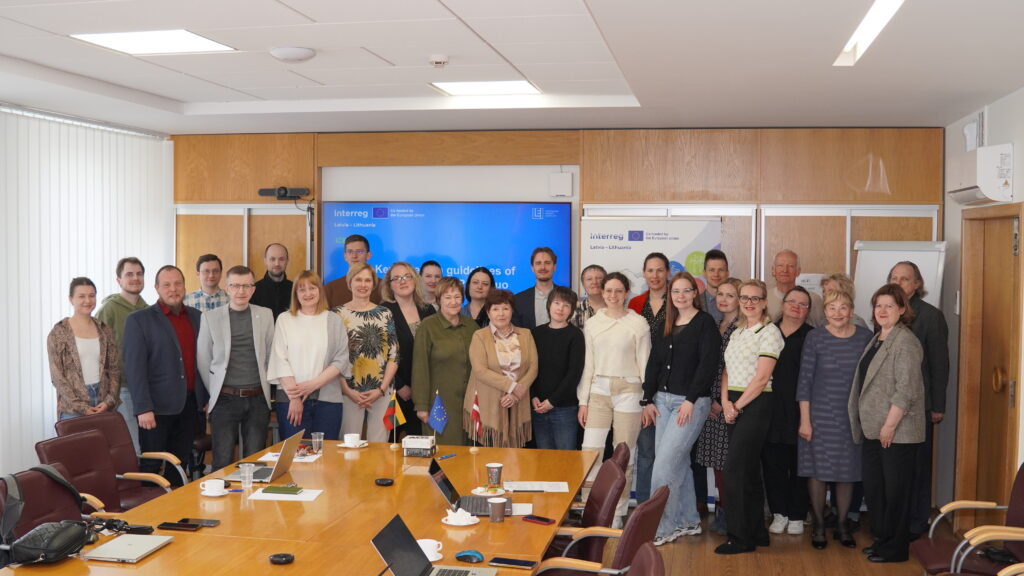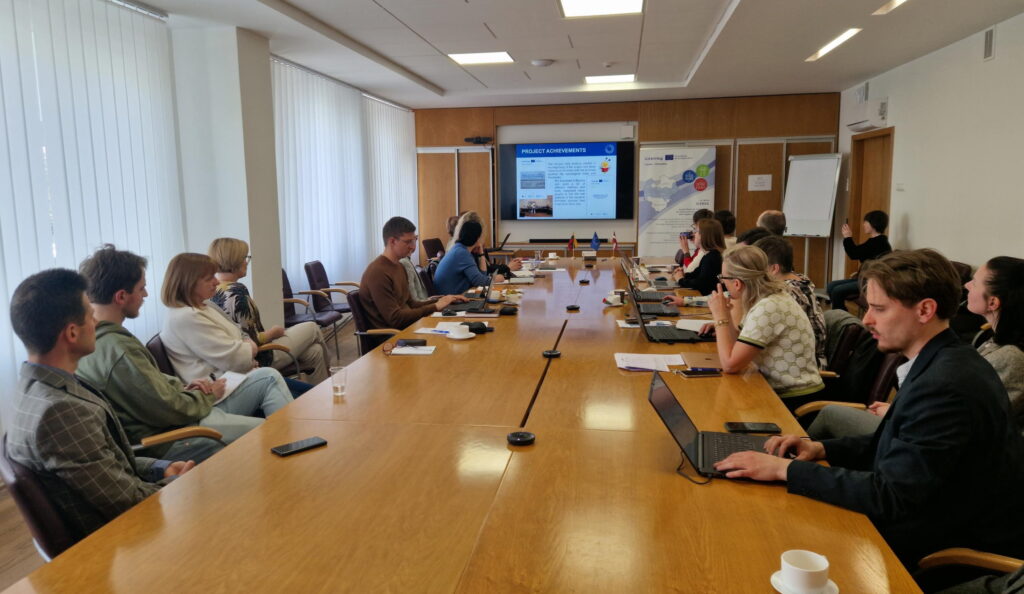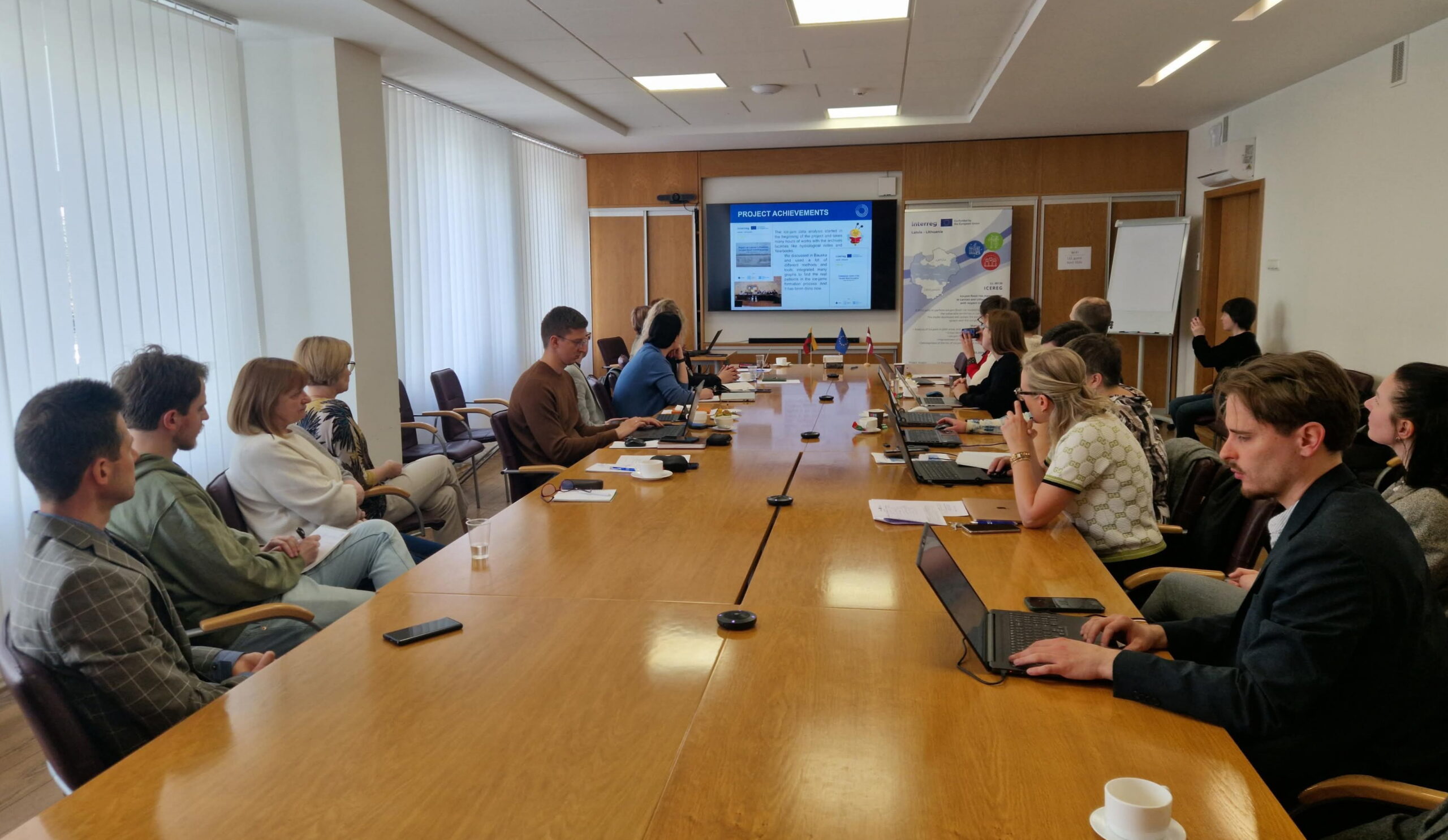On April 29, experts from Latvia and Lithuania gathered in Kaunas for the mid-term workshop of the ICEREG project — an initiative aimed at jointly developing solutions for the improved management of ice-jam flood risk using corresponding flood maps and the conceptual model of ice-jam flood formation with respect to climate change.

photo: Simonas Mikalauskis
- The event brought together 32 participants from Latvian Environment, Geology and Meteorology Centre, Lithuanian Energy Institute, and Lithuanian Hydrometeorological Service, to share and evaluate the progress made during the first year of the project. During the workshop, researchers presented their findings and results across the core areas of the project:
- The HEC-RAS geometry of the pilot rivers has been updated using river cross-section data obtained during field works;
- Recent historical flood data were reviewed to better understand the frequency, intensity, and timing of ice-jam flood events in the pilot rivers;
- Multiple historical hydrological and meteorological data analysis was carried out to develop the conceptual model of ice-jam formation;
- Possibilities to integrate the ice-jam formation conceptual model into the existing Early warning systems were investigated;
- Climate change perspectives were investigated up to the year 2100. Their impact on the future hydrological regime of the pilot rivers and on the ice-jam flood risks during the upcoming decades was evaluated;

photo: Diana Meilutytė-Lukauskienė
- Latvian team informed about the updated 2nd cycle Spring Flood Risk maps for the pilot areas, and new ice-jam flood risk maps for the Pļaviņas hydropower plant;
- Lithuanian researchers outlined the research objectives of the LIFE SIP Vanduo project. This initiative is aiming to enhance national water resource management, including pressure analysis and measures for status improvement.
With regard to data analysis, climate or flood modelling, and HEC-RAS geometry creation, experts emphasized the issue of uncertainty of obtained results. This is particularly important in modelling climate change impact on the flood risk.
In the workshop discussions section, participants discussed the upcoming tasks within the project, as ICEREG moves into its next phase.


